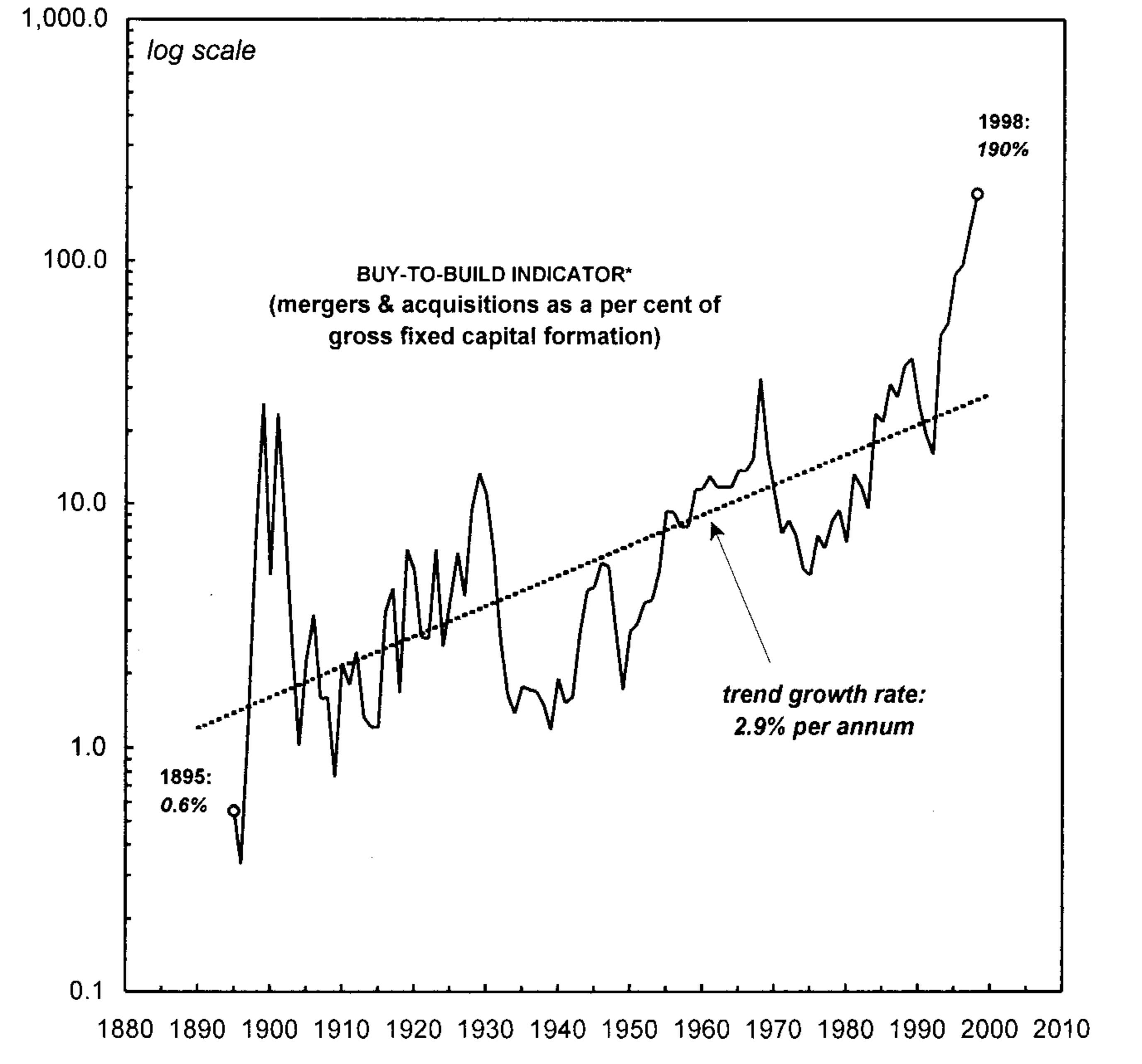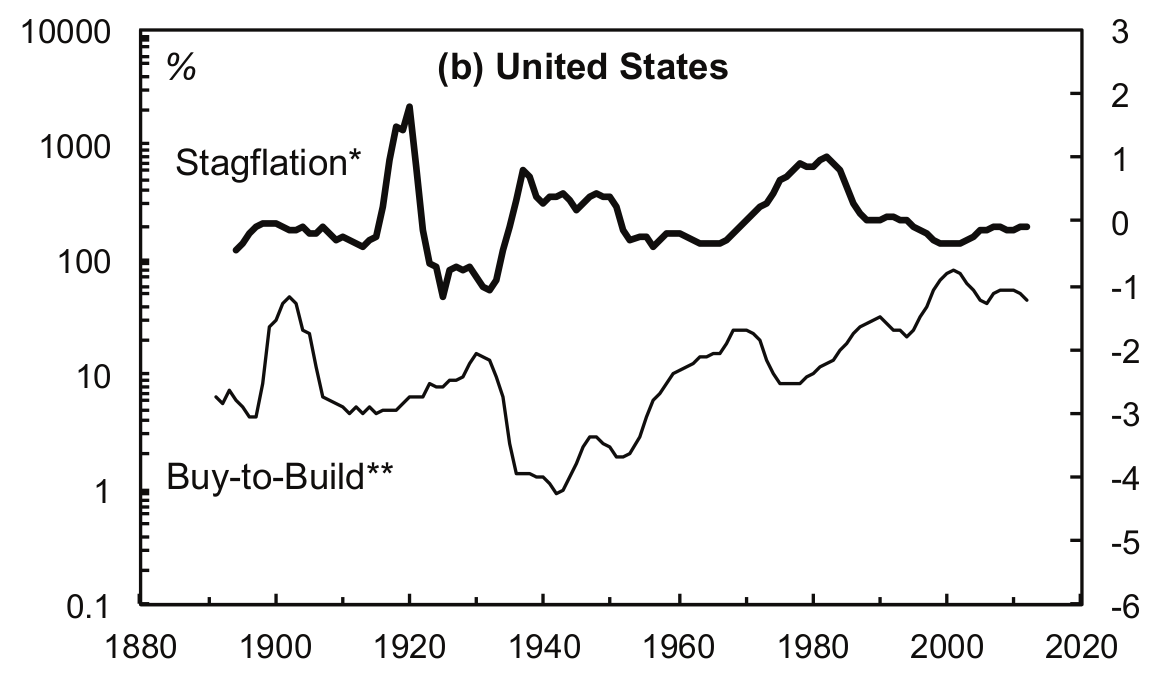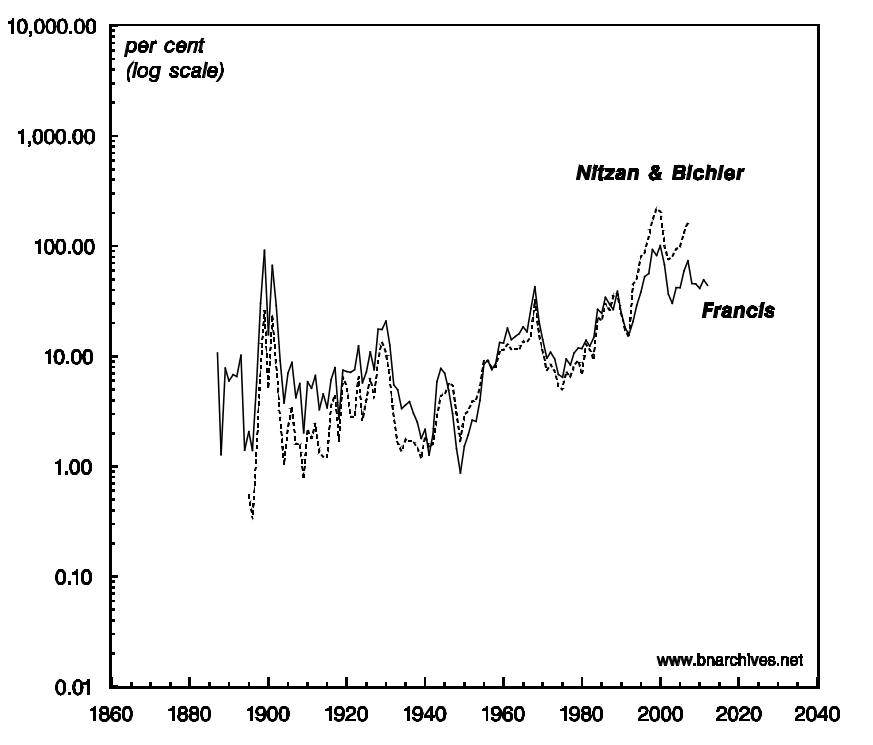Originally published at Economics from the Top Down Blair Fix Today I’m trying a different type of post — one that’s not a deep dive, but instead, a rapid-fire summary of an important topic. My inspiration comes from Cory Doctorow, a sci-fi author who runs an old-fashioned links blog that he syndicates across the internet. […]
Continue ReadingFrancis’ Updated Buy-to-Build Indicator
Joe Francis The tendency toward buying other companies more than building new productive capacity continues in the United States In a past life I had access to expensive databases of corporate statistics, which I used to calculate the buy-to-build indicator for the United States from the 1880s until 2012. In short, the buy-to-build indicator shows […]
Continue ReadingFrancis, Bichler & Nitzan, ‘The Buy-to-Build Indicator: An Exchange’
Abstract The first part of the exchange is a short article by Joe Francis. The article provides new long-term estimates and an assessment of the buy-to-build indicator for the United States and Britain, going back to the end of the 19th century. The second part offers commentary by Shimshon Bichler and Jonathan Nitzan. Citation The […]
Continue ReadingThe Buy-to-Build Indicator: New Estimates for Britain and the United States
The Buy-to-Build Indicator New Estimates for Britain and the United States JOSEPH A. FRANCIS October 2013 Abstract This note presents new long-term estimates of what Jonathan Nitzan and Shimshon Bichler have named the ‘buy-to-build indicator’, which is calculated as the value of mergers and acquisitions as a percentage of gross capital formation. Keywords Britain, buy-to-build […]
Continue ReadingFrancis’ Buy-to-Build Estimates for Britain and the United States: A Comment
Francis’ Buy-to-Build Estimates for Britain and the United States A Comment SHIMSHON BICHLER and JONATHAN NITZAN October 2013 Abstract Comments on Francis’ new estimates of the buy-to-build indicator for the United States and Britain. These estimates offer a welcome correction, modifications and additions to the U.S. numbers that we first presented in 1999 and later […]
Continue Reading




